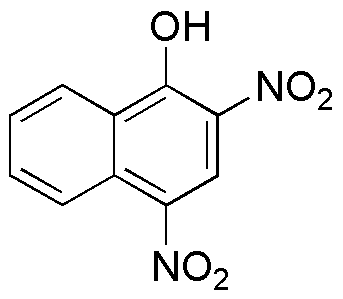Martius Yellow is widely utilized in research focused on:
- Dye Industry: It serves as a vibrant dye for textiles, providing bright yellow shades that are highly sought after in fashion and home decor.
- Biological Staining: In microbiology, it is used as a staining agent to visualize cellular structures under a microscope, aiding in the identification of various microorganisms.
- Analytical Chemistry: Martius Yellow acts as a reagent in chemical analyses, particularly in the detection of certain metal ions, enhancing the accuracy of results.
- Food Industry: It is employed as a food coloring agent, approved for use in certain regions, to enhance the visual appeal of food products.
- Research Applications: The compound is utilized in synthetic organic chemistry for developing new compounds, benefiting researchers looking for efficient synthesis pathways.
General Information
Properties
Safety and Regulations
Applications
Martius Yellow is widely utilized in research focused on:
- Dye Industry: It serves as a vibrant dye for textiles, providing bright yellow shades that are highly sought after in fashion and home decor.
- Biological Staining: In microbiology, it is used as a staining agent to visualize cellular structures under a microscope, aiding in the identification of various microorganisms.
- Analytical Chemistry: Martius Yellow acts as a reagent in chemical analyses, particularly in the detection of certain metal ions, enhancing the accuracy of results.
- Food Industry: It is employed as a food coloring agent, approved for use in certain regions, to enhance the visual appeal of food products.
- Research Applications: The compound is utilized in synthetic organic chemistry for developing new compounds, benefiting researchers looking for efficient synthesis pathways.
Documents
Safety Data Sheets (SDS)
The SDS provides comprehensive safety information on handling, storage, and disposal of the product.
Product Specification (PS)
The PS provides a comprehensive breakdown of the product’s properties, including chemical composition, physical state, purity, and storage requirements. It also details acceptable quality ranges and the product's intended applications.
Certificates of Analysis (COA)
Search for Certificates of Analysis (COA) by entering the products Lot Number. Lot and Batch Numbers can be found on a product’s label following the words ‘Lot’ or ‘Batch’.
*Catalog Number
*Lot Number
Certificates Of Origin (COO)
This COO confirms the country where the product was manufactured, and also details the materials and components used in it and whether it is derived from natural, synthetic, or other specific sources. This certificate may be required for customs, trade, and regulatory compliance.
*Catalog Number
*Lot Number
Safety Data Sheets (SDS)
The SDS provides comprehensive safety information on handling, storage, and disposal of the product.
DownloadProduct Specification (PS)
The PS provides a comprehensive breakdown of the product’s properties, including chemical composition, physical state, purity, and storage requirements. It also details acceptable quality ranges and the product's intended applications.
DownloadCertificates of Analysis (COA)
Search for Certificates of Analysis (COA) by entering the products Lot Number. Lot and Batch Numbers can be found on a product’s label following the words ‘Lot’ or ‘Batch’.
*Catalog Number
*Lot Number
Certificates Of Origin (COO)
This COO confirms the country where the product was manufactured, and also details the materials and components used in it and whether it is derived from natural, synthetic, or other specific sources. This certificate may be required for customs, trade, and regulatory compliance.


